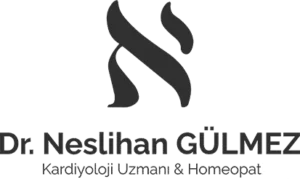What is Unilateral Disease in Homeopathy
Knowing the characteristics of diseases in order to heal people with homeopathic treatment is important in how we approach the case. If we want to briefly summarize the situation, which is called “one sided disease” in English and which is a unilateral disease in Turkish, it is chronic diseases that hide all their symptoms except one or two main symptoms. If we want to make a clearer definition, diseases that show very few symptoms are called “unilateral diseases”. In such cases the symptoms are very few in number and it becomes difficult to look at the whole, so it is important that the homeopath be experienced…
Unilateral Disease Types
Unilateral diseases are divided into 2 types according to the main symptom shown by the patient:
Unilateral disease with internal complaints
Unilateral diseases with external complaints
- Unilateral disease with internal complaints
These groups of diseases exhibit many of the internal symptoms that mostly affect the internal parts of the body.
Again, there are two types;
Diseases with physical manifestations. Example: Many years of headache, long-standing diarrhea, an old cardialgia, etc.
Diseases with mental symptoms. Example: mania, insanity, etc.
- Unilateral diseases with external complaints
These are called local diseases, we will explain in detail in another article…
Homeopathic Treatment of Unilateral Diseases
- Sometimes it seems difficult to treat unilateral diseases because the symptoms are not present enough. The portrait of the disease is not properly drawn.
- However, careful case collection and examination will reveal one or two serious and important symptoms present in the case.
- Based on these present symptoms, the physician should select the apparently indicated remedy that he deems most appropriate.
- Such selection is based on the patient’s very striking, determined, unusual and distinctive symptoms, the remedy chosen sometimes improving the particular case (§ 178 – Organon).
- However, often due to the paucity of symptoms, the chosen remedy may not fully cover the entire case in question. When applying such a defective homeopathic remedy, the patient complains of the appearance of new symptoms that he has never experienced before. These symptoms are nothing but “additional symptoms of the drug”. This should not be considered a bad prognosis. All of the present symptoms should be considered as the disease picture itself.
- The physician, who accepts the accessory symptoms of the drug as a symptom of the disease, gets more of the symptoms of the disease. Thus, the sum of the symptoms of the disease is accurately plotted with the help of the accessory symptoms of the drug. Hahnemann stated in § 182 that “the imperfect choice of the drug, which in this case is almost inevitable because the symptoms present are so limited, serves to complement the demonstration of the symptoms of the disease.”
- Now, based on the symptoms of the disease and the additional symptoms of the newly developed medicine, we can prescribe a new but well-chosen homeopathic remedy.
- In footnote 181 to Aphorism, Hahnemann, before considering the accessory symptoms of medicine as a whole, the doctor must be sure that the accessory symptoms are not caused by a mistake in diet and regimen, or by some menstrual irregularity, conception and delivery. It should be confirmed that the new symptoms are solely due to the drug administered.
- When the previously administered remedy has completed its effect, the current symptomatology and the status of the remaining disease (status morbi) should be thoroughly questioned. On the basis of this existing integrity, a new homeopathic remedy must be selected and re-administered (§ 182-183).
- Sometimes, even when the patient is sick and in pain, the symptomatology may not be clear enough and distinctive. In such a case, giving “Opium” will help to clarify the case. Opium, in its secondary effect, makes the patient’s pain and suffering more clear to the physician (footnote to § 183).
- In this way, many remedies can be applied one after the other, that is, in succession, on the basis of current and remaining integrity. Each repetition should be done only after the previous one has completed its action. The same method can be applied until the healing is complete and the patient recovers.
